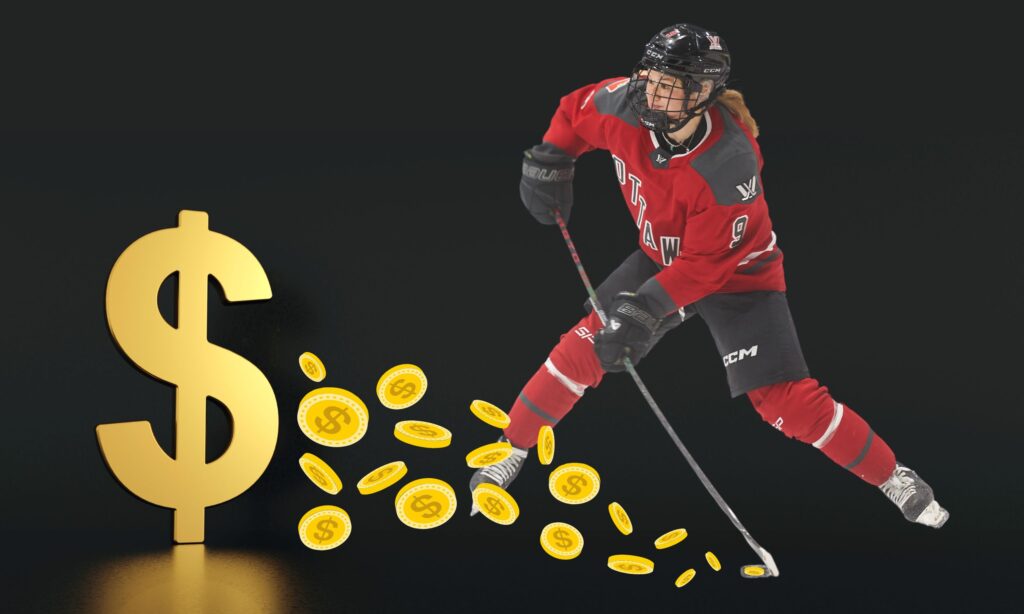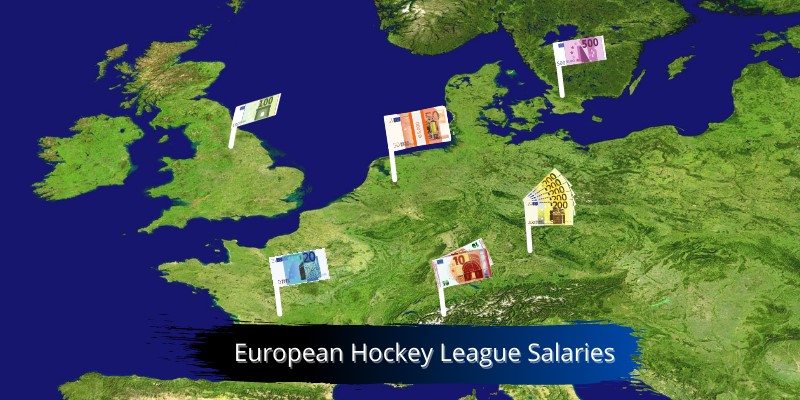Ice hockey in the UK has grown into a fiercely competitive sport, attracting a mix of local talent and international professionals. Yet, compared to the financial structures seen in North American or Scandinavian leagues, salaries in Britain remain modest. Most players combine their passion for the game with part-time work or coaching to supplement income. Still, at the top level — particularly within the Elite Ice Hockey League (EIHL) — wages have steadily improved over the past decade, reflecting the sport’s gradual professionalization and stronger fan base.

EIHL Player Salaries
The Elite Ice Hockey League (EIHL) is the highest professional level of hockey in the UK. Player earnings vary by team and role, but most full-time professionals earn between £30,000 and £50,000 per season (gross). Contracts usually run from late August to April and often include housing, transport, and travel allowances, adding value to the overall package.
While modest by global standards, these figures mark clear progress compared to earlier decades, reflecting the league’s growing stability and professionalism.
Top Earners and Imports
The highest-paid players in the EIHL are import signings — seasoned forwards, defencemen, or goaltenders from North America or Europe. These players can earn up to £100,000 per season, particularly if they bring experience from leagues such as the AHL, DEL, or SHL.
Imports are often relied upon to drive offensive output and boost crowd interest. Their salaries reflect their key roles and the experience they bring to their teams.
British Player Salaries
For British-born players, salaries are lower. Most homegrown professionals earn between £15,000 and £25,000 per season, depending on age and ice time. Many supplement income through coaching, youth programmes, or off-season work.
Young British players see the EIHL as a development platform, using the league to gain experience before pursuing opportunities abroad in higher-paying competitions.
No Salary Cap and Team Budgets
The EIHL has no salary cap, so spending depends on each club’s financial capacity. Belfast Giants and Sheffield Steelers run the largest payrolls, regularly attracting top-tier imports. Mid-range clubs like Nottingham Panthers and Cardiff Devils balance competitiveness with controlled budgets, while smaller-market teams such as Fife Flyers and Dundee Stars prioritise local talent and development.
This open-budget model leads to visible wage differences but also allows clubs flexibility in rewarding players through bonuses and incentives.
The Financial Reality
Even at the top level, few EIHL players can rely on hockey alone for long-term financial security. Shorter seasons, limited TV revenue, and smaller sponsorship deals mean contracts are often short-term and performance-based.
Still, the EIHL provides a genuine professional setup, passionate fans, and improving finances. With rising attendances and growing partnerships — including commercial and betting collaborations — the league’s financial future looks stronger each season.
NIHL and Lower League Pay
Below the top-flight EIHL sits the National Ice Hockey League (NIHL), which operates primarily as a semi-professional competition. Player earnings in this league vary significantly from club to club but typically fall between £50 and £200 per game. The amount depends on factors such as a team’s financial backing, travel distance, and the player’s role within the roster.
While some of the stronger NIHL sides are well organised and maintain regular training schedules, the financial reality is very different from that of full-time professional leagues. Clubs rely heavily on local sponsors, match-day ticket sales, and small-scale community partnerships to stay afloat.
Balancing Work and Hockey
Most NIHL players maintain full-time jobs outside hockey, treating the sport as a second commitment. It’s common to find players working as teachers, tradesmen, engineers, or office employees during the week, then hitting the ice at weekends. Their dedication ensures competitive hockey continues to thrive across Britain, even when financial reward is limited.
Amateur Level (NIHL Division 2)
The second division of the NIHL operates on a purely amateur basis. Players receive no official salary, though they are often reimbursed for travel costs, equipment, and match-day expenses. For many, this setup offers the ideal balance between staying involved in the sport and managing everyday responsibilities. The focus at this level lies in player development, local pride, and keeping grassroots hockey alive.
Comparison with European Leagues
When set against major hockey nations in Europe, British salaries remain modest. In Sweden’s SHL, the average player earns between £80,000 and £200,000 per season, depending on experience and performance. Germany’s DEL sees wages rise higher, from £100,000 to £300,000, reflecting its larger fan base and commercial success. Meanwhile, in Switzerland’s National League (NL), salaries for top players can reach an impressive £500,000 per season, placing it among the most lucrative leagues outside North America.
At the global peak, the NHL sets the financial standard. Even the minimum salary is $775,000, roughly £620,000, while star players earn several million dollars annually through contracts and endorsements.

Why the Gap Exists
Several structural factors explain why UK hockey salaries trail behind:
– Attendance: Average EIHL crowds sit around 2,000-4,000 spectators per game, compared with 8,000-10,000 in top European leagues.
– Broadcasting: The UK lacks large-scale TV deals, while leagues in Germany and Sweden enjoy major network coverage.
– Sponsorship: Limited corporate partnerships and smaller markets reduce overall revenue.
– Development Pathways: The UK system produces fewer export-level players, impacting the league’s overall commercial draw.
Despite these differences, the British game continues to develop, with rising attendance figures and improving club facilities offering hope for gradual financial growth.
Additional Income Sources
For some of the top EIHL professionals, additional income plays a vital role in balancing annual earnings. Players often supplement salaries through coaching clinics, summer training camps, and private sessions aimed at junior players. A few also secure minor equipment sponsorships, which may include free gear or modest stipends. Fan meet-and-greet sessions, autograph signings, and public speaking engagements further add to their seasonal income.
Betting Partnerships and Promotional Deals
A notable development in recent years has been the rise of betting-related collaborations. Recognised EIHL stars occasionally take part in promotional campaigns for licensed UK bookmakers, contributing to fan engagement through live event appearances, online betting previews, and video interviews. Such activities can generate between £2,000 and £5,000 per appearance.In addition, social media promotions linked to responsible betting brands can bring £500-£1,500 per post, depending on player reach and follower engagement. For the league’s most marketable names, these promotional activities can add an extra £5,000-£15,000 per season. It’s a growing income stream that reflects how professional players are finding creative, regulated ways to enhance their financial stability while supporting fan engagement initiatives.
